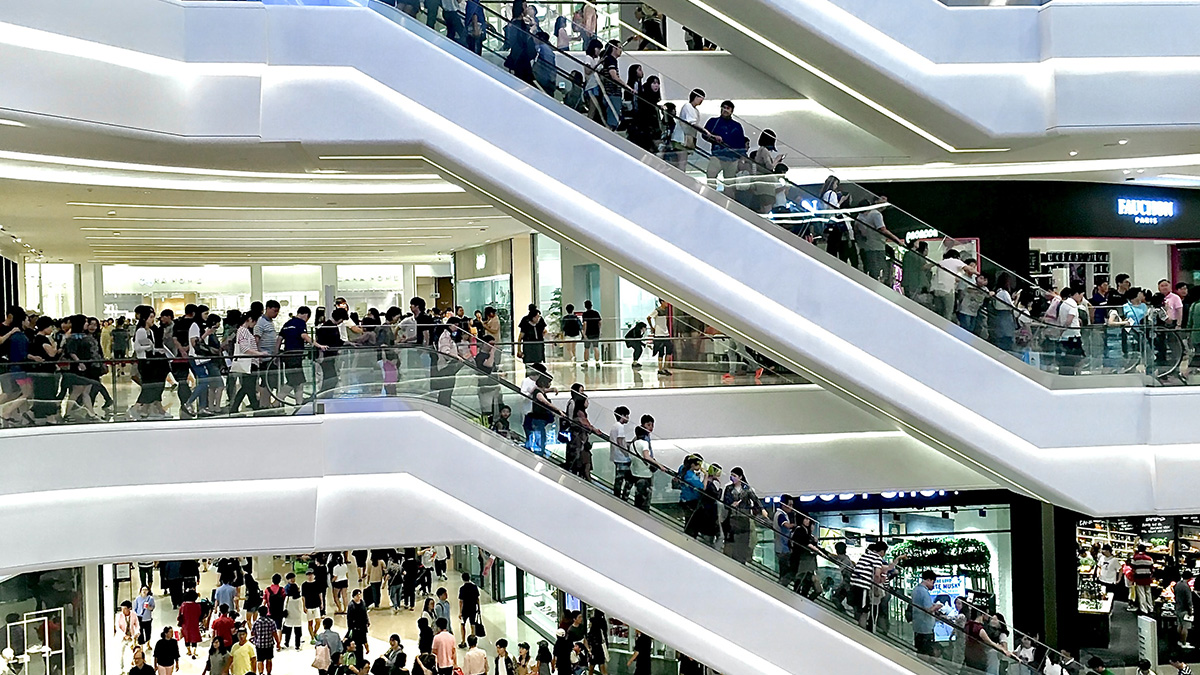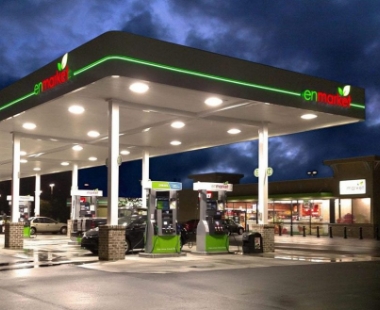

By Adonis Brewer
Manager of Business Development
Here's what we'll cover:
Retail lighting is as much of an art as it is a science, with many talented architectural lighting designers dedicating their careers to the craft in order to help their clients’ brands stand out from the competition and make a lasting impression with customers.
In recent years, LED lighting has increasingly become the tool of choice for lighting designers who are looking to both make their unique mark on the brands they represent and help their client’s retail spaces attract more customers.
But why? What makes rigid and flexible LED lighting solutions like Lektron’s Vibraline and LumiFlex™ products such an effective design and branding tool? And how do they evoke an emotional response within customers to encourage new and repeat purchases?
Rather than take our word for it, let’s dive into the retail and scientific data to see how LED lighting increases retail sales.
How Architectural LED Lighting Attracts More Customers to Your Retail Location
On average, your retail space has a little less than 5 seconds for your storefront to make a positive first impression on a customer.
So it’s no wonder why the modern North American economy has been termed “the attention economy” by financial scholars the world over.
In nearly every industry, being most effective at grabbing the attention of customers has never been more important.
Your store isn’t just competing for their attention with other stores; you’re competing against every stimuli and distraction out there.
Your retail store stands out from competitors.
The most effective lighting designers and retail experts know this by heart, which is why they want bright, cost-effective, and on-brand lighting like VibraLine® that draws attention to the retail storefront and away from nearby competitors.
It’s in these applications where they’re tapping into humans’ innate attraction to vivid light and the natural emotions that specific types of lighting can evoke.
By first catching the eye and attention of customers with branded lighting, the first — and most important — battle amongst retail competitors is won.
LED lighting allows retailers to control and amplify customer experiences.
No matter the environment, humans are hard-wired to associate colors with specific emotions and experiences.
Through colorful architectural LED lighting, retail brands can turn this into an advantage, projecting the experiences they want customers to enjoy before they even walk through the door.
For instance, if a brand wants to create a serene and inviting storefront experience, softer greens and cooler white colors act as a calming agent, immediately signaling to customers that this brand is here for their relaxation and peace of mind.
Or, if your brand is, say, focused on creating a spirit of excitement and novelty, eye-catching reds are a great way to evoke those emotions and elevate customer mood when you catch their eye.

Leon®: Our go-anywhere,
do-anything rigid LED
- Long life: 50k-70k hours
- 85% more energy efficient than neon
- Seamless color, no sags, no light gaps
How Architectural LED Lighting Improves Customer Perception of Your Retail Brand’s Quality
Lighting is a powerful emotional tool that sets the stage for the experience you want your customers to enjoy from the moment they lay eyes on your store.
However, the impact of LED lighting doesn’t end there. Your lighting also has a powerful effect on how safe your customers feel, how they perceive your products, and how they feel about your brand as a whole.
It improves customer perception of your brand and overall quality.
When inside your store, the overall quality of your lighting directly impacts how enticing your products look.
Wanting to boost the appeal of your store’s perfume and cologne display cases? Bold red lighting can draw attention and create feelings of excitement, while bright white lighting improves their perceived quality, makes them feel more luxurious, and commands attention.
By implementing indoor architectural LED lighting in your retail store and its displays, like our LumiFlex™ and LumiLine™ products, you create a framework of emotional experiences that drive customers to spend more.
Your retail store feels safer and cleaner to customers.
Lighter, more vivid lighting — particularly that around the cooler white side of the spectrum — makes your spaces feel inherently cleaner and safer to your customers, engendering positive feelings toward your brand.
And when customers feel like they’re walking into a clean and inviting environment, their overall impressions of the quality of those products and services increases as well.
These inviting experiences are crucial for retail stores; just one poor experience where your store feels dirty or unsafe to customers can lead to negative reviews, bad word of mouth, and lost revenue.

LumiFlex™: Durable, flexible, and
the perfect neon replacement
- Long Life: 50,000+ hrs
- IP68, UV resistant
- Perfect for signs, decoration, and track lighting
How Architectural LED Lighting Boosts Retail Brand Familiarity and Repeat Business
Your lighting creates a consistent, engaging emotional experience for customers.
Customers want to know what they can expect, no matter if you’re a one-shop operation or you’re a nation-wide franchise.
Through your retail store’s architectural LED lighting, your building becomes one of the most powerful tools for creating that anticipation and excitement for the experiences they’ve come to expect.
Whether it’s Burger King’s brilliant red lightbands across the tops of its buildings or the brilliant greens and blues of Holiday Inn’s porte cocheres illuminating the night sky, successful brands know that creating that visual consistency is the first step toward an enjoyable, always-on-brand experience.
Your consistent branding increases customer loyalty to your brand.
When customers know they’ll have a great time — every time — when they visit your retail store, brand loyalty and repeat business objectively skyrockets.
However, this anticipation and, ultimately, loyalty, are only created when you create consistency in these experiences.
Having bright displays, creating engaging end-caps, and making your building’s architecture and outdoor branding consistently eye-catching are key to getting the most from your lighting investment and transforming your brand into a salesforce all its own.
Partnering with Lektron for your Retail LED Lighting
For decades, we’ve had the honor of helping retail brands throughout North America win more business through LED lighting, signage, and our other visual branding solutions.
And we’re ready to be your partner in creating that same success for your brand.
No matter the scope or scale of your retail operations, LED lighting can be a powerful revenue driver and cost-saver for your business. We’re ready to get to work to help you attract more customers, amplify your retail brand, and increase sales.

About Adonis Brewer
Adonis Brewer, Manager of Business Development at Lektron Branding Solutions, connects businesses of all sizes throughout North America reach more customers through turnkey LED, product identification, and signage solutions that attract more customers and increase revenue.



